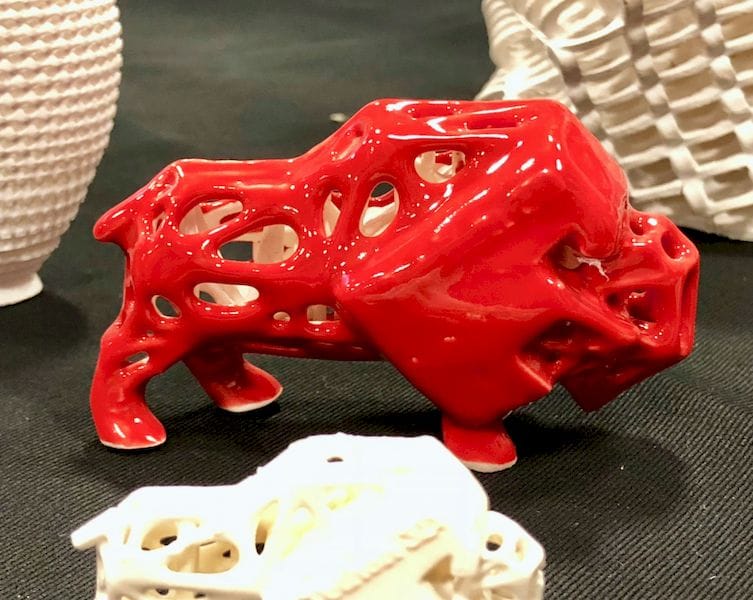
There are sources for third party resin for 3D printing.
One of them is Omaha-based Tethon 3D, who provide a wide variety of choices for 3D printers employing a resin process.
The resin process involves selectively solidifying small portions of a liquid photopolymer resin in layers to gradually build up a full, 3D object. Typically the wavelength most effective is in the UV range.
Tethon spent three years of research and development to produce their first resins.
Resin is an interesting 3D print material as its liquid form allows easy mixes of other substances to alter the engineering properties of the finished print. Using this mixing approach, Tethon has produced, for example, ceramic 3D printing resins.
These are a mix of a liquid photopolymer and a fine ceramic powder. The idea is that after you 3D print an object, you can fire it, just as you would a normal ceramic project, and the solidified photopolymer would be burnt out, leaving just ceramic material.
Such prints can also be glazed after sintering. In fact, they’d act just like normal ceramics at that point. However, the difference is that you would have been able to 3D print a complex and detailed object whose structure might be unattainable using conventional ceramic-making procedures.

Tethon 3D developed their line of ceramic resins simply because they saw a need for the material, since the resin printer manufacturers frequently did not supply them. Manufacturers tend to supply only the basic materials with their machines, and there often is not a lot of choice.
There’s a reason for that, too: material (and printer) that come from a manufacturer had better work perfectly. That perfection is achieved with significant testing and parameter tuning. If a 3D printer manufacturer were to offer a huge variety of resins, they’d be burdened with a great deal of testing and maintenance – and customer questions.
Thus they often leave the more exotic materials to third party resin providers such as Tethon 3D. The manufacturers get around the complications by simply saying that customers are on their own when using “non standard materials”.
That’s fair, but according to Tethon 3D, they can supply successful 3D print parameters in most cases. They told us they “rarely find a printer that doesn’t work”.
Tethon 3D’s current line of resins for 3D printing includes some very interesting materials:
- Castalite Investment Casting Resin: a type of ceramic material used to create 3D printed molds. From this can be made metal objects by pouring liquid metal.
- Flexalite: A flexible material that can bend after printing.
- Genesis Development Resin Base: A simple base resin that can be used for resin experiments, for example by mixing in other materials.
- Porcelite® Ceramic Resin: Their main ceramic composite resin.
- Tethon3D Ceramic Binder: A base resin designed to be mixed with ceramic powders. Coincidentally, Tethon 3D also supplies a line of ceramic powders for some powder-based equipment, but which also works with this base resin. These include: earthenware, alumina, porcelain and stoneware.
- Vitrolite® Glass-Ceramic Resin: A glass-filled resin that provides for very strong objects.
While these third party resins cannot be used in every resin 3D printer due to a requirement to use only “company resins”, it is quite possible to use them in many “open materials” devices, and those that offer an experimental mode, such as Formlabs’ equipment.
Tethon 3D sells their resins in a number of ways. You can buy product directly off their website, obtain it from resellers, and they also offer a white labeling program for 3D printer manufacturers who wish to include some unusual resins in their standard lineup.
Via Tethon 3D

